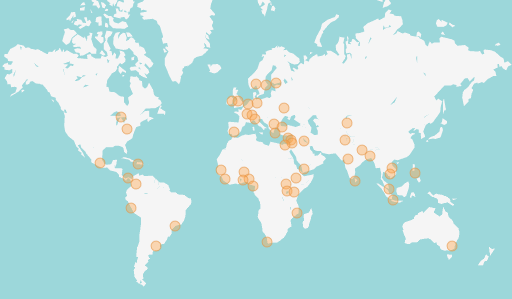By Gillian Elliott and Madhawa Palihapitiya
The 6th and 7th of February, 2024 marked a notable milestone for the Atrocity Prevention Lab (APL) as it hosted its first conference, bringing together a community of over 100 conflict and atrocity prevention professionals and offering a platform for showcasing and interaction.

The APL, launched just last year (2023), was established by the Signal Program on Human Security and Technology at the Harvard Humanitarian Initiative. The lab’s mission is to strengthen existing conflict and atrocity early warning/early action (EW/EA) work through the integration of spatial methods.
One of the ways the APL works to achieve this mission is by building a community of practice for EW/EA practitioners, technology developers, and academic researchers to share atrocity prevention EW/EA ideas. In line with this objective, the lab’s inaugural conference, titled, “From Data to Action: Atrocity Prevention through Spatial Methods,” sought to bring together such a community.
Day 1 of the conference thematically highlighted successful integrations of geospatial tools in EW/EA systems but also recognized challenges faced by frontline EW/EA organizations, such as limited data, technical literacy in small communities, data collection challenges, and siloed EW systems that do not communicate with each other.
Day 2 of the conference pivoted towards technological and analytical innovations and aspirations for the field, with presentations that explored complex conflict forecasting models that can be leveraged towards a range of purposes, including conflict early warning, prediction of societal impact from conflict, and monitoring of existing conflict.
With one keynote address, five presentations, two panel discussions, and two workshops, the conference provided ample opportunities to learn, engage, and reflect on the intersection of geospatial technologies and EW/EA work. Some key insights emerged:
- There are numerous EW/EA organizations from Asia, Africa, and the Middle East that operate at the frontline of atrocity prevention. The assets they continue to leverage for this purpose include primarily their human resources, localized knowledge, cultural and conflict sensitivity, and vast, trust-based community networks like youth groups that are deployed resourcefully to prevent atrocities with some support from State and Security Sector actors. However, these organizations continue to face daunting challenges in terms of utilizing spatial methods and addressing the data-to-action or warning-to-response gap. While early warning information may be available, timely preventive action remains elusive due to a lack of political will or resources. Frontline EW/EA organizations often face data collection and funding issues that limit their capacity and access to technology, including spatial analytics.
- Modeling efforts and data collection approaches developed by organizations like Armed Conflict Location and Event Data Project (ACLED) and Peace Research Institute Oslo (PRIO) have continued to advance our capacity for prediction, thus increasing the chances of upstream or midstream atrocity prevention. Several key cutting-edge advances have taken place/are about to take place, particularly with the advent of machine learning and associated prediction modeling that could help communities prepare for atrocities as a global community.
- However, the top-down and bottom-up efforts between frontline EW/EA organizations and international analysts still need to develop. Despite some collaborations between frontline atrocity prevention organizations and academic and analytical groups from high income countries, the conference again highlighted the need to bridge this divide. More opportunities need to be created for closer collaboration and interoperability to help test the accuracy of these prediction models and their impact on organizational workflows and population wellbeing.
This conference served as a starting point for the Atrocity Prevention Lab as a community of practice and a platform for collaboration between data technicians and frontline EW/EA workers. This is the beginning of a conversation that the APL and Signal Program aims to continue facilitating through future conferences and case studies.
The entire series of conference recordings can be found on YouTube.